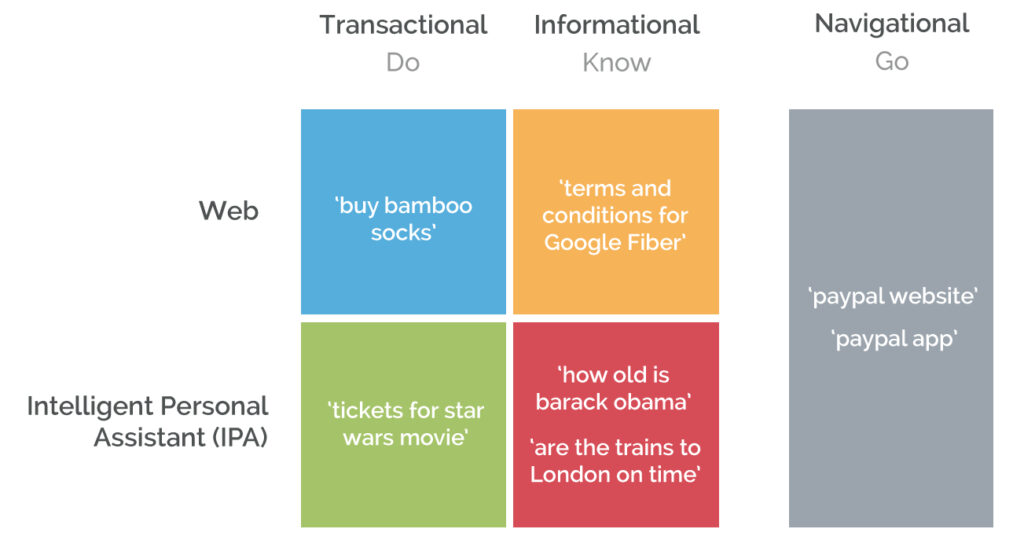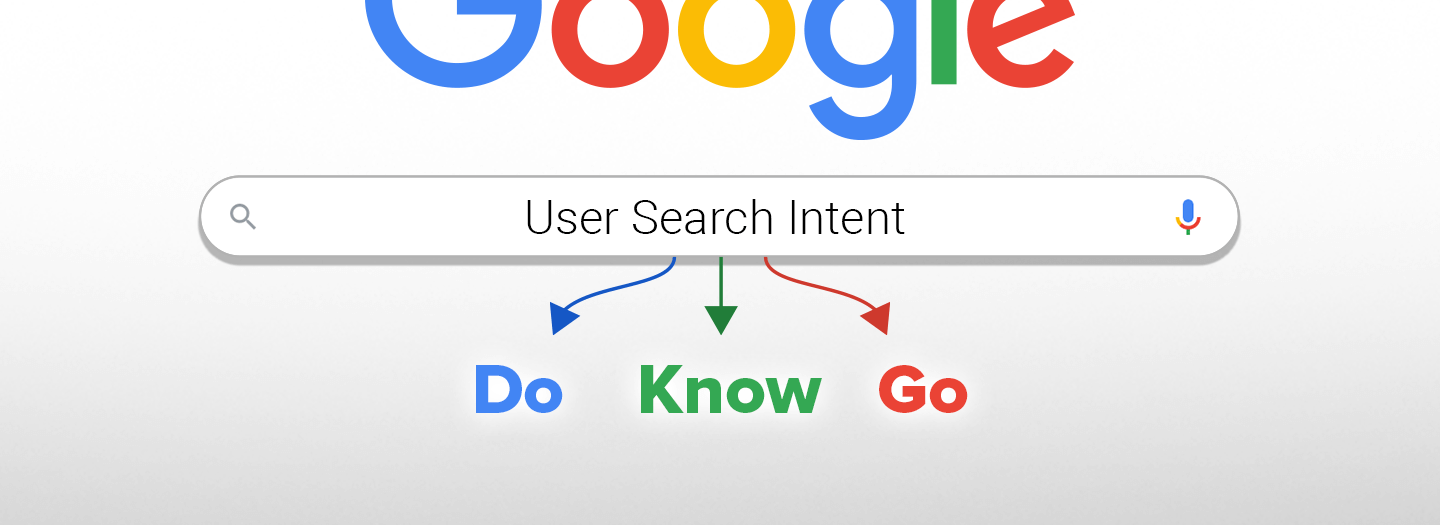When you search for something, it’s up to Google to interpret the meaning behind your search and what your intent is with the search. User Search Intent is what brings these two together. For example, if you search “Target”, you’re probably looking for the nearest store, and not a target you would find at a shooting range. Google knows this because “Target” is one of the more popular retailers and the chances of a user searching for it are far greater than them searching for a product that would be used at a shooting range.
Searches on the internet can be broken down into three main categories, Do – Know – Go. It’s these three categories that determine what shows up in the SERPs.
1. Do – A “Do” search is when someone is looking to complete a specific action, like buying something, making an appointment, or anything else that has an end goal. When you search “buy flatscreen TV” you don’t want a history of the creation of the TV, you want purchasing options.
2. Know – These searches are informational and applicable when the user is looking to gain a bit of knowledge. Using the TV example from before, searching “how are TVs made” should bring you articles on the process behind making TVs and not product listings on where to buy one.
3. Go – These are the most direct types of searches, in which the user knows exactly where on the internet they want to go and knows the specific page they mean to visit. These are mostly searches for a particular brand name, where the person wants to go to that company website, but may not know the specific URL.
What do you do with search intent and Do – Know – Go? Make sure your content fulfills a purpose, as this is the core of what makes a good website. You’ll often be going after “Do” and “Know” searches, but how do you know which one you fit into?
First, check the current SERPs to see what kind of content is ranking for your target keyword or phrase. Are the top results informational or transactional? Knowing what’s ranking already will determine if your page has a chance of ranking for that phrase before you even write it. Make sure the page you want to rank for matches the intent you’re going for. Does your title, H1, and meta description all match the keyword and the intent? If your page doesn’t match the intent of the search, people will quickly leave your page to go back to the SERP, which is an indicator to Google that your page doesn’t fulfill the search intent purpose and will move you further down the results pages.
When searchers come to your page, it needs to not only match the search intent, but also allow them to have a good user experience. A few ways to do this is to limit the amount of popups and ads, use appropriate font sizes to make the content easy to read, and incorporate subheadings, lists, or bullet points and other styling to make the post easy to read so the user can quickly find the answer they’re looking for. Remember images and videos are great ways to quickly convey information to your website visitors, as long as they fulfill the search intent.
You can check to see how your website is doing in fulfilling search intent within Google Analytics by looking at the bounce rate and average session duration on your page. High bounce rates and low session durations mean that the content isn’t what people were looking for.
Pro Tip: A great resource for finding out exactly what the user search intent is, is by looking at those “people also ask” boxes that appear in the SERPs. This is directly from Google telling you exactly what users want to know more about. Having your site page answer those questions is a great way to rank well and satisfy searchers.
If you have an eCommerce site, you’re fulfilling the “Do” part of a person’s search intent. You want to focus on transactional keywords such as “buy”, “purchase”, “shop”, etc. Going to the TV example again, try to rank your eCommerce store for terms like “buy TV” and “purchase flatscreen TV”, while staying away from general knowledge or the history behind your products. Focus on the bottom of the funnel activities and keywords.
The sites that rank the highest for informational searches are usually Wikipedia, detailed informational blog posts, or general knowledge-based websites. Writing content around your topic with details, history, events, and information will help you rank for “Know” searches.
We recommend not trying to rank for “Go” keywords if they’re not yours—you’d just be wasting time (and money). Google knows that if someone is searching a specific company name or product, they’re not looking to go to someone else’s site. For example, if you ever have an SEO client that really wants to beat the competition and rank for a competitor term, ask them why would Google show their site when someone is clearly looking to go to that competitor site specifically. Google knows the user intent with “Go” searches and isn’t going to start ranking you ahead of competitors for their own terms.

Photo Credit: Moz.com
Want to get more ideas on how to improve your SEO performance in 2021 and through 2022? Read our 13 Best SEO Ideas for 2021. Interested in brushing up your keywords to better fulfill user search intent? Reach out to the expert team at a(m) to learn how we can help.
